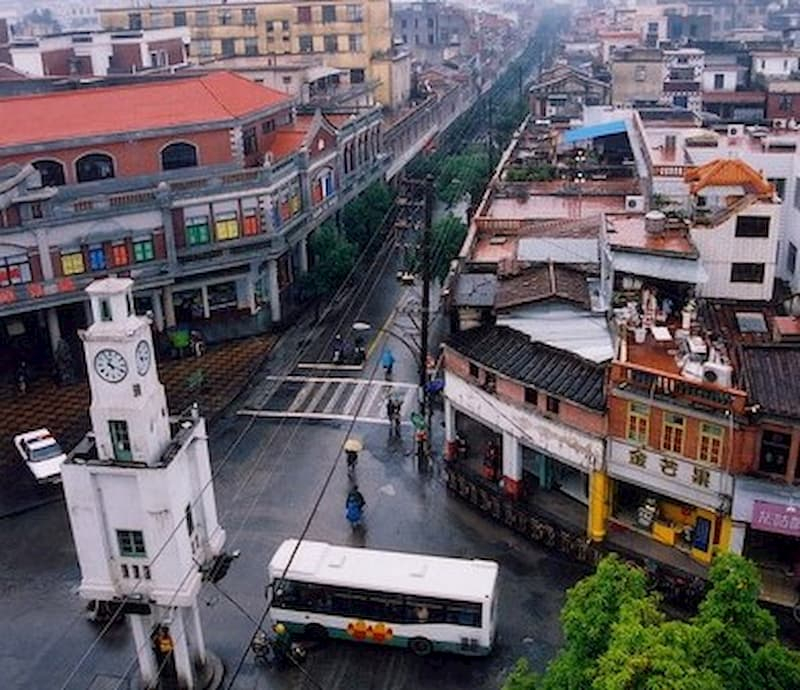
Quanzhou—City of Light
Splendid
Chi Culture
Topic
Quanzhou—City of Light
Quanzhou, located on the southeast coast of Fujian and facing the Taiwan Strait, is a time-honored trading port and commercial center with a good many historical sites well preserved.
In the Song (960–1279) and Yuan (1271–1368) dynasties, Quanzhou was one of the world’s largest ports on the Maritime Silk Road with trade routes extended to Northeast Asia’s Japan and Korean Peninsula, Southeast Asia, South Asia, the Persian Gulf, and even as far as the coast of East Africa. It was recorded that Quanzhou port traded with fifty-eight countries and regions in the thirteenth century, increasing to ninety-eight in the fourteenth century.
Quanzhou’s opening to the outside world brought infinite business opportunities for merchants both at home and abroad. The port became the largest oriental center for commodity distribution and cultural exchange between China and other countries. In 1271, Jacob d’Ancona, a Jewish merchant from Italy, made a voyage to Quanzhou port. He marveled at what he saw. He recorded everything in his manuscript The City of Light which says: “There are so many oil lamps and torches in the streets that the city shines brilliantly in the night and is visible from a great distance. For this reason it is called the City of Light.” “This is a great city of trade where merchants make large profits . . . to this city come so many merchants, Franks, Saracens, Indians, and Jews, as well as Chinese, that for the whole year long it is like one big fair. You can find goods here from the remotest parts of the world.”
Quanzhou had risen from an emerging port to its prime before the Yuan dynasty, but its development was severely hindered by wars of rebellion in the late Yuan and early Ming period (ca. late fourteenth century) and by the Ming government’s policy of restricting the city’s trading partner to Ryukyu only. Quanzhou later deteriorated from a major international entrepôt to a local port.
The folk culture of Quanzhou with strong local characteristics has retained the ancient legacy of Fujian, adopted the Han culture which had spread southward from the Central Plain, and embraced the diversified cultures swarming in through the Maritime Silk Road. Quanzhou’s architecture not only preserved traditional Chinese styles but also absorbed Western elements. Applying palatial architectural designs to residential houses, the “large palace-style house” is the most typical of traditional Quanzhou dwellings.
The ancient Nanyin music and Liyuan Opera are famed as “living fossils” of Chinese culture. The Nanyin music, which originated from the imperial banquet entertainment music of the Tang dynasty (618–907), was developed by the blending of folk music and opera music of southern Fujian. Because of its close relationship with music of the Tang, Song, and Yuan dynasties, it is known as “a living history of music.” The Liyuan Opera, which originated in the Song (960–1279) and Yuan (1271–1368) dynasties, has retained the gestures, musical instruments, and playing methods of the Nanxi Opera, which can be corroborated in ancient murals and stone carvings. Besides regional popularity, Quanzhou’s folk culture also has spread with its merchants and emigrants to Hong Kong, Macao, Taiwan, and Southeast Asian countries.
Quanzhou is also the birthplace of the Southern Shaolin Temple martial arts. Yu Dayou (1503–1579), a renowned general from Quanzhou in the Ming dynasty (1368–1644), practiced martial arts in Qingyuan Mountain as a teenager. During the Jiajing reign (1521–1566), he visited the Northern Shaolin Temple of Songshan Mountain to watch a martial arts performance of the monks. Realizing that they had lost the authentic tradition of the Shaolin kung fu, the general brought two of the monks with his southbound army, taught them the real Shaolin martial arts in the next three years, and asked them to go back to teach the monks in the Northern Shaolin Temple. Thirteen years later, he presented the Jian jing (Classic of the sword), a classic work of Shaolin martial arts, to the monks, marking the return of authentic Shaolin kung fu from the Southern Shaolin Temple to the Northern Shaolin Temple.



